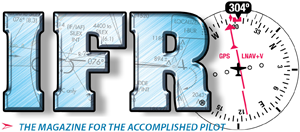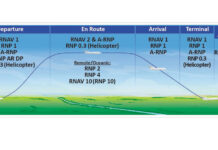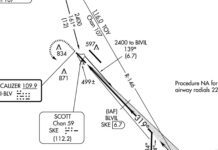It only takes a cursory look at an ICAO flight plan form to get cranial blood-vessel spasms and the resultant migraine. Who starts a form at item seven? Yes, you really have to look up aircraft type codes in ICAO DOC 8643. Can equipment codes really use the whole alphabet, indecipherable by humans? Do they really have only one remarks box that serves as an explanation for nearly every other box on the whole form?
Despite the form’s flaws and seemingly unfathomable complexities, the FAA is committed to drag U.S. pilots to the ICAO flight plan. Since the ICAO form is already required for flights utilizing performance based navigation (PBN), flying in RVSM airspace, utilizing ADS-B services, and flights outside the U.S., everybody else might as well share the pain.
Trying to understand the ICAO flight plan without grasping the context is like a bouillabaisse without broth—lacking. The ICAO flight plan reflects its organization. By understanding the processes of ICAO and for whom the product was designed, the resulting form starts to make some sense. Once the broth is properly seasoned, some of the hacks for flight planning can be examined. (No point in letting perfection get in the way of good-enough, or, as an engineer friend of mine likes to say, “I’d rather be approximately correct than precisely wrong.”)
Design by Committee
At the end of World War II, the world developed organizations to promote peace, security, and economic prosperity. The United Nations emerged from the carcass of the League of Nations in 1945 and the North Atlantic Treaty Organization formed in 1949. Predating both of those organizations, delegates from 52 nations endured a Chicago autumn to sign the Chicago Convention on International Civil Aviation, creating the International Civil Aviation Organization (ICAO). ICAO promotes standardization of international civil aviation and was brought under the umbrella of the U.N. in 1947.
With the influence of the U.S. in ICAO’s development, the first article in the convention upholds state sovereignty. Countries cannot be bullied into complying. Additionally, ICAO prides itself on consensus. Standards and recommended practices aren’t even proposed until there’s virtual unanimous agreement.
Anyone who works in engineering or design can attest that projects done by committee result in products that do many things meagerly and nothing well. This afflicts ICAO’s flight plan. Appeasing 191 nations yields an equipment code box that nobody understands without study (and seldom even then).
The ICAO flight plan wasn’t designed for pilots. Most flying worldwide is done by airlines with dispatchers and systems to track the flight plan’s myriad details.
Since ATC is a revenue-producing enterprise for many countries, one big goal of the ICAO flight plan was to provide a design that transferred well between air navigation service providers and record information about aircraft and crew capabilities to meet diverse national regulations.

Flight Plan Overview
The FAA publishes the ICAO flight plan as FAA Form 7233-4. ICAO, in DOC 4444, spends 21 pages explaining how to complete the form. Instead of surveying every option, let’s look at a typical IFR flight from Atlanta Regional Airport to Saint Simon’s Island on the Georgia coast.
The form starts with item seven, (Don’t ask.), aircraft ID. Fill in the box from left to right leaving extra boxes blank. Flight rules are “I” for IFR and type of flight is “G” for General Aviation. Enter the number on board with leading zeroes. Type, looked up in ICAO DOC 8642 (available on the web), is C172 for a Cessna 172. Wake turbulence category is “L” for light if less the 15,500 pounds. OK, that part was easy.
Item 10, equipment codes, is where it can get interesting. Fortunately, the FAA doesn’t care about approach capabilities as equipment codes. So for equipment, I list “SDG/C” indicating I have standard equipment (S for VHF/VOR/ILS), DME (D), GNSS (G) and a mode C transponder. Equipment codes in ICAO flight plans are an additive system.
Departure aerodrome is KFFC and departure time of 2000Z as HHMM. Cruise speed will be a whopping N0084, for 84 knots (“N” for knots, “M” for Mach), and at an altitude of 7000 feet entered as A070 (“A” for feet, “F” for flight level). Routing will be “DCT BOWLN V154 MCN V362 BERTT DCT.” “DCT” must be used to indicate direct. Destination is KSSI taking 0205 as HHMM. That’s it for the portion that goes to ATC. Item nineteen is retained by Flight Service for search and rescue.
There are some common perils filling out the form. Many airports don’t have four letter ICAO identifiers. For example, the identifier for Jekyll Island is 09J. To use Jekyll Island in an ICAO flight plan, “ZZZZ” must be entered as the airport identifier and a remark included in item 18. For a destination airport, the coding is “DEST/09J.” For a departure airport, it would be “DEP/09J.”) Also, when adding equipment codes for domestic flights, don’t list PBN even though GPS qualifies. Using an “R” (PBN RNAV) equipment code requires a remark in item 18 and opens a whole can of worms.
Equipment Codes
Fasten your seatbelt; this is gonna get unavoidably turbulent no matter how much we try to simplify it. (Don’t blame us; we’re just the messengers.)
At my day job, a typical flight plan contains the equipment code SDE3GIRWYZ/LB1 and seven entries in the remarks section. Delving into the intricacies isn’t for the faint of heart. Note that our first article on ICAO flight plans in the March 2013 issue got bogged down here as simple guidance for GA hadn’t yet really emerged. Now we have that “approximately correct” practical guidance.
The complications stem from the equipment codes and associated required remarks trying to convey three types of information—installed equipment, capability, and operator authorization. This is how the complication of the “R” equipment code, indicating performance based navigation (PBN), arises.
PBN simply categorizes area navigation systems based on capability, not actual equipment. Many types of systems are used for PBN: DME/DME, VOR/DME, IRS, LOCAN-C, GPS or even multiple-sensor systems. Systems have different performance levels, or accuracy. Required navigational performance (RNP) and RNAV are terms that denote accuracy in miles. For example, an RNP of one indicates an aircraft’s actual position will be within a mile of system position 95 percent of the time. RNAV systems also have accuracy reported in miles. A system can have an RNAV value of one. Technically there are some differences between RNP and RNAV, but they aren’t worth worrying about.
Instrument approved GPSes commonly used by general aviation are PBN systems with RNAV values. A handful of FAA orders and Advisory Circulars cover RNAV approval. The main document is AC 90-100A. Part 91 operations (excluding subpart K) don’t require approval for RNAV, but must comply with criteria listed in the AC. Fortunately, the criteria is standard for any IFR operation; current database, being able to retrieve procedures from the database, being able to enter waypoints, etc.
Filing an equipment code of “R” requires a PBN note in the remarks section. The remark indicates performance level. ICAO guidance asks that all applicable performance criteria be noted (to a maximum of eight). Therefore, at the airline, the flight plan contains the following remark: PBN/A1B1C1D1S2, meaning we are approved using all sensors (FMS mix sensor input) for Oceanic RNAV 10, enroute and terminal RNAV 1, and RNP approaches with Baro-Vnav. A Garmin G1000 with WAAS could file PBN/A1B2C2D2L1O2S2 indicating similar performance based on GNSS. The PBN notation is checked against the equipment listed in item 10 of the flight plan. If multiple systems were listed in the PBN remark, multiple systems must also be listed under the equipment list. (On the RNAV PBN entry, numbers correspond to sensor type. A 1 indicates multiple sensors, 2 indicates GNSS, etc.)
To add more confusion, the FAA requires an additional note in section 18 if PBN is used specifying RNAV capabilities in FAA terms. A typical notation is “NAV/RNVD1E2A1,” meaning an operator is approved for RNAV 1 for departure, RNAV 2 enroute, and RNAV 1 arrival.
There’s some debate at the IFR offices. ICAO’s DOC 4444 says that “R” should be used for PBN-approved systems. Some argue that GA cannot use this code because the operator isn’t approved. I disagree. The FAA’s AC 90-100A states part 91 operators “meeting the RNAV performance requirements in this AC should follow the aircraft and training guidance in this AC, but are not required to obtain a Letter of Authorization (LOA).” AC 90-100A includes a list of common IFR GPSes that are compliant with the AC.
But we all agree that filing “R” is bad juju. It would make correctly completing an ICAO flight plan a formidable task, prone to error, providing no benefit.
If filing equipment wasn’t confusing enough, it doesn’t get any better following the slash. Following navigation, radio and approach equipment comes surveillance equipment with myriad options.
Normal transponders are easy; list A for a mode A transponder or C for mode C. There are different types of mode S transponders, but most systems are either “S” or “E.”
ADS-B systems are also included. The letter B indicates a 1090 MHz installation while a U indicates UAT. Following either of these letters by a one indicates “out” only. A two indicates “out” and “in” capability. An entry could be “/CB2” for a mode C transponder with 1090 Mhz ADS-B out and in. The best place to find information on anything besides the most basic surveillance equipment is the aircraft manual or avionics dealer. Designations can change based on software updates or how the system was installed. Surveillance equipment is also an additive system.
Bringing it Home
The ICAO flight plan is a Frankenstein with 191 masters. The dysfunction is rooted in ICAO’s founding principles and ethos—the sovereignty of nations and unanimous agreement. The form is designed to satisfy an insanely diverse set of operational requirements. Considering that, it’s actually a decent product.
Most items on the ICAO flight plan are straight forward, such as I for IFR flight; G for general aviation, L for light wake turbulence. Cruise speeds require an N to indicate knots and the level box needs an A for altitude in feet. Routing requires “DCT” for direct, which is generally needed before the first point and after the last.
Equipment codes complicate the flight plan, but there are only a few most pilots really need. Although ICAO recommends listing as much information as possible, doing so is asking for trouble. Make life easy and just file what you want to do. Don’t want to use an ADF, don’t file it. Sticking with equipment codes D (DME), F (ADF), G (GNSS) and S (VHF, VOR, ILS) will prevent most headaches.
ICAO flight plans are in our future. Starting to get comfortable with them now prevents a migraine when the FAA finally pulls the plug on its flight plans. Keeping entries as simple as possible, and not filing an “R” equipment code will allow you to become familiar with ICAO flight plans without reaching for the bottle of Excedrin.
Jordan Miller, ATP, CFII, MSc, SDE3GIRWYZ/LB1, surfs the waves of bureaucracy as only a Californian could. He flies for a major U.S. airline.





